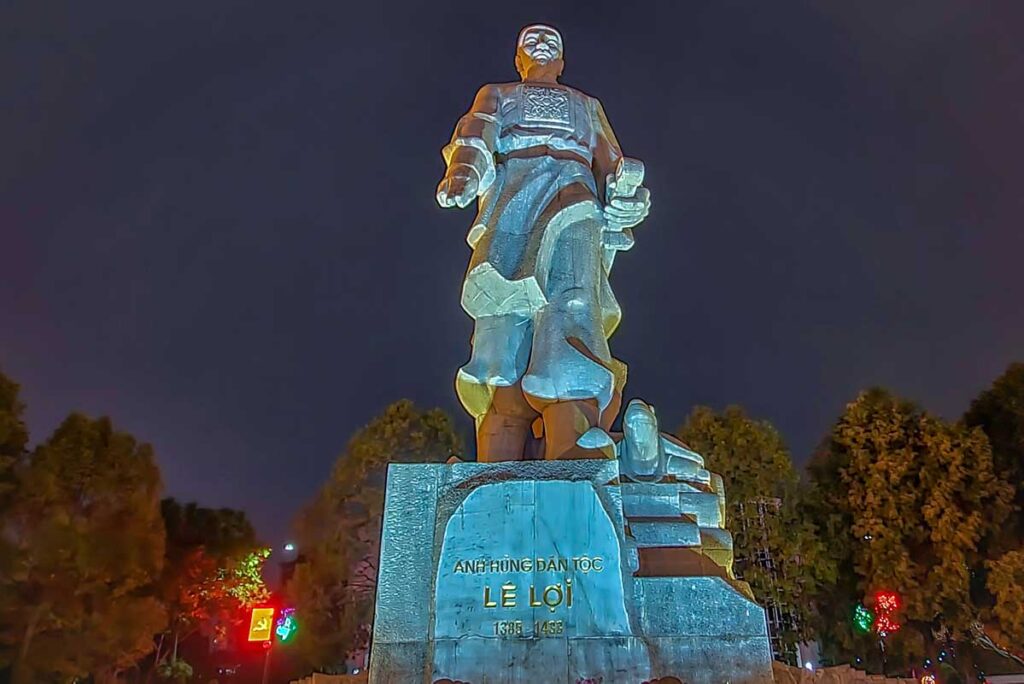Who was Le Loi?
Le Loi was a wealthy landowner from Thanh Hoa province who became the leader of the Lam Son uprising against Ming Chinese occupation in the early 15th century. After years of guerrilla warfare and several decisive battles, he drove the Ming forces out of Vietnam and re-established independence in 1428. Taking the throne as Emperor Lê Thái Tổ, he founded the Later Le dynasty, which went on to rule for centuries.
He is remembered not just as a skilled military leader but also as a symbol of national resistance. His story, combining real victories with legendary tales like the magical sword of Hoan Kiem Lake, made him one of Vietnam’s most celebrated heroes. Today, Le Loi is honored across the country with temples, streets, and monuments bearing his name, standing as a reminder of Vietnam’s enduring struggle for independence.
Vietnam in the time of Le Loi
When Le Loi was born in 1385, Vietnam was already in a period of turmoil. The once-powerful Tran dynasty was collapsing under weak leadership, court intrigue, and external pressure from the kingdom of Champa in the south. In 1400, Ho Quy Ly seized the throne, introducing reforms but also creating instability that left the country vulnerable.
This weakness opened the door for the Ming dynasty of China, who invaded in 1407 under the pretext of restoring the Tran. Instead, Vietnam was placed under direct Chinese rule as Jiaozhi province. The Ming authorities imposed strict control: Confucian education and Chinese dress were forced on the population, Vietnamese culture was suppressed, and heavy taxes drained resources from ordinary farmers. Even personal freedoms were limited, with families suffering from forced labor and conscription.
These harsh conditions led to widespread resentment. Between 1415 and 1424 alone, dozens of uprisings broke out across the Red River Delta and highland provinces. Most were small and brutally crushed, but they showed how much dissatisfaction had built up. By the time Le Loi raised his banner of revolt in 1418, the ground was already prepared for a larger, more organized movement that could finally push out the Ming.
Key events in Le Loi’s life
Early life in Thanh Hoa
Le Loi was born in 1385 in Lam Son, Thanh Hoa province, an area known for its mix of Vietnamese and ethnic minority communities. His family were wealthy landowners, giving him influence and resources, but he grew up in a time of political upheaval and foreign pressure. Some accounts suggest possible Mường roots, while others emphasize his Kinh lineage. Regardless, his background gave him both the means to lead and an understanding of the struggles faced by ordinary villagers under shifting rulers.
The Lam Son Uprising (1418–1423)
In 1418, as Ming rule tightened its grip on Vietnam, Le Loi declared himself Bình Định vương, or “Prince of Pacification,” and launched the Lam Son uprising. At first, his army was small and heavily outnumbered. They relied on guerrilla tactics—striking quickly, moving constantly, and using their knowledge of the terrain to harass Ming forces. The rebels faced crushing defeats and betrayals, at times forced to retreat into the mountains. Le Loi even sought temporary peace with the Ming, though it quickly collapsed. Despite setbacks, his persistence and charisma attracted support from local clans and ethnic minority groups, laying the foundation for a much stronger resistance.
Expanding resistance (1424–1426)
By 1424, Le Loi’s movement had grown into a serious challenge to the Ming. His forces captured Nghe An, a strategic region in central Vietnam, giving them access to resources and recruits. From there, his campaigns expanded both north and south, steadily pushing Ming troops into defensive positions. Scholar and strategist Nguyễn Trãi joined him during this period, helping shape military strategy and political messaging that encouraged more Vietnamese to join the cause. Popular support snowballed as peasants, scholars, and local leaders increasingly saw Le Loi as the figure who could restore independence.
Major Battles and Final Victory (1426–1427)
The turning point came in 1426 with the Battle of Tốt Động–Chúc Động, where Le Loi’s forces crushed a much larger Ming army south of Hanoi. This victory shifted the momentum decisively. His troops then besieged the Ming stronghold at Xương Giang, cutting off supplies and forcing surrender. In 1427, the Ming sent massive reinforcements from China, but these too were defeated—most famously at the Chi Lang pass, where terrain and strategy destroyed the invaders. After years of bloody struggle, the Ming finally agreed to withdraw. Vietnam’s independence was restored, ending two decades of Chinese occupation.
Emperor of Dai Viet (1428–1433)
In 1428, Le Loi was crowned Emperor Lê Thái Tổ, establishing the Later Le dynasty. His short reign focused on rebuilding a war-torn country. Soldiers and loyal followers were rewarded with land, canals and roads were repaired, and rice farming was expanded to restore food supplies. He revived the Confucian examination system, reorganized government administration, and strengthened the monarchy.
Relations with the Ming court were carefully managed—Vietnam remained formally a tributary state, but its independence was secure. Le Loi also maintained ties with Champa to the south, balancing diplomacy and defense. In 1433, he died after falling ill, leaving the throne to his son, Lê Thái Tông. Though his reign lasted just five years, his legacy as the liberator of Vietnam endured for centuries.
Myths and Legends of Le Loi
The Magical Sword Thuận Thiên
The most famous legend tied to Le Loi is that of the sword Thuận Thiên, meaning “Will of Heaven.” According to the story, the blade was discovered by a fisherman named Le Thận, who later joined Le Loi’s army. The hilt was found separately, glowing in a tree, and when Le Loi joined the two pieces together, they fit perfectly. With this sword, he was said to grow taller, stronger, and capable of leading his men to repeated victories over the Ming.
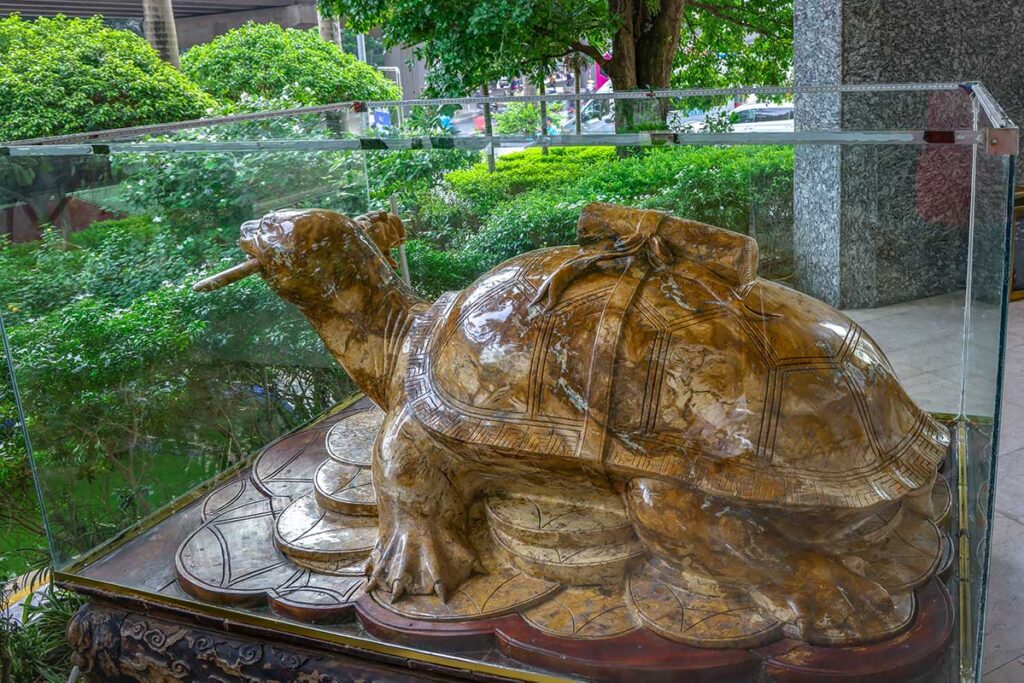
Years later, after Vietnam had regained independence, Le Loi was boating on a lake in Hanoi when a giant golden turtle spirit, Kim Quy, rose from the water. The turtle asked him to return the sword to its rightful owner, the Dragon King. Le Loi realized the weapon had been only lent to him for the purpose of liberation. He returned it, and the lake became known as Hoan Kiem, the Lake of the Returned Sword—today one of Hanoi’s most iconic landmarks.
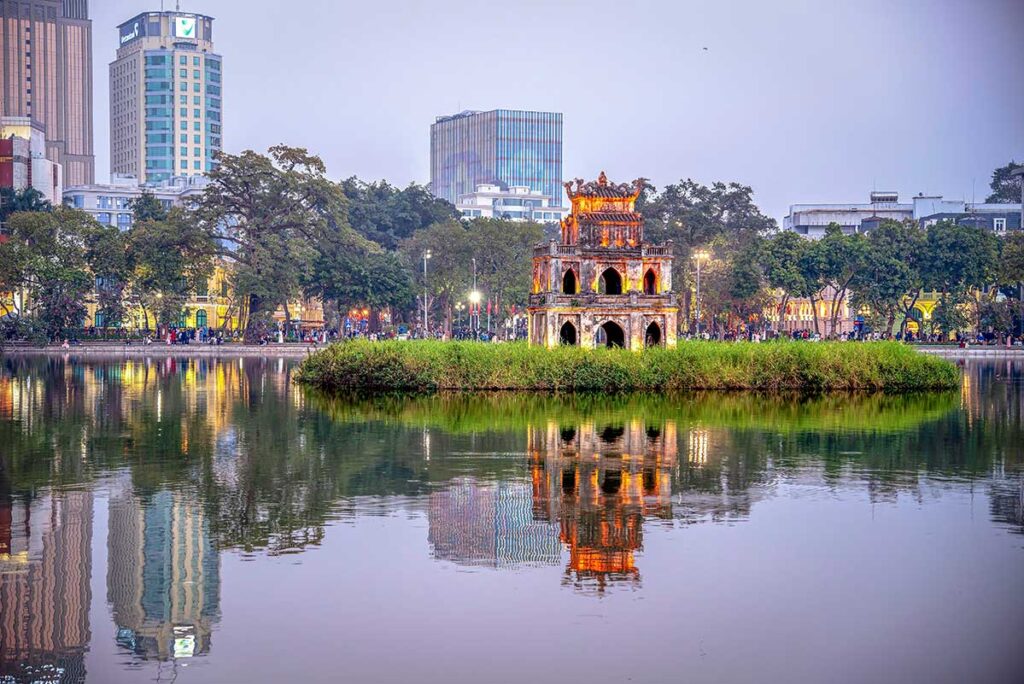
The Fox Spirit and Divine Protection
Another tale tells of Le Loi’s escape from Ming soldiers after a defeat. As he fled, he paused to bury the body of a woman he had come across, asking her spirit for protection. When the enemy released dogs to track him, a fox spirit appeared with a human face, distracting the dogs and leading them astray. The Ming soldiers punished the animals for failing, leaving Le Loi hidden and safe. Later, he built a shrine to honor the woman as a protector of the nation, blending folklore with gratitude.
Cultural Memory in Songs and Stories
Beyond these myths, Le Loi was celebrated in countless poems, folk songs, and later plays that portrayed him as the perfect model of a wise and just ruler. These stories weren’t only about his victories—they reinforced the idea that his cause had heavenly approval, giving his rebellion moral legitimacy. Over the centuries, these legends blurred the line between history and folklore, cementing Le Loi not just as a historical figure, but as a larger-than-life symbol of Vietnam’s fight for independence.
Le Loi in Vietnam today – His legacy for travelers
Le Loi’s story is not just confined to history books—his presence is still felt across Vietnam. From lakes and temples to street names and museum exhibits, his legacy appears in both grand memorials and small everyday reminders. For travelers, these places provide a direct link to the man who shaped Vietnam’s independence story.
Hoan Kiem Lake, Hanoi
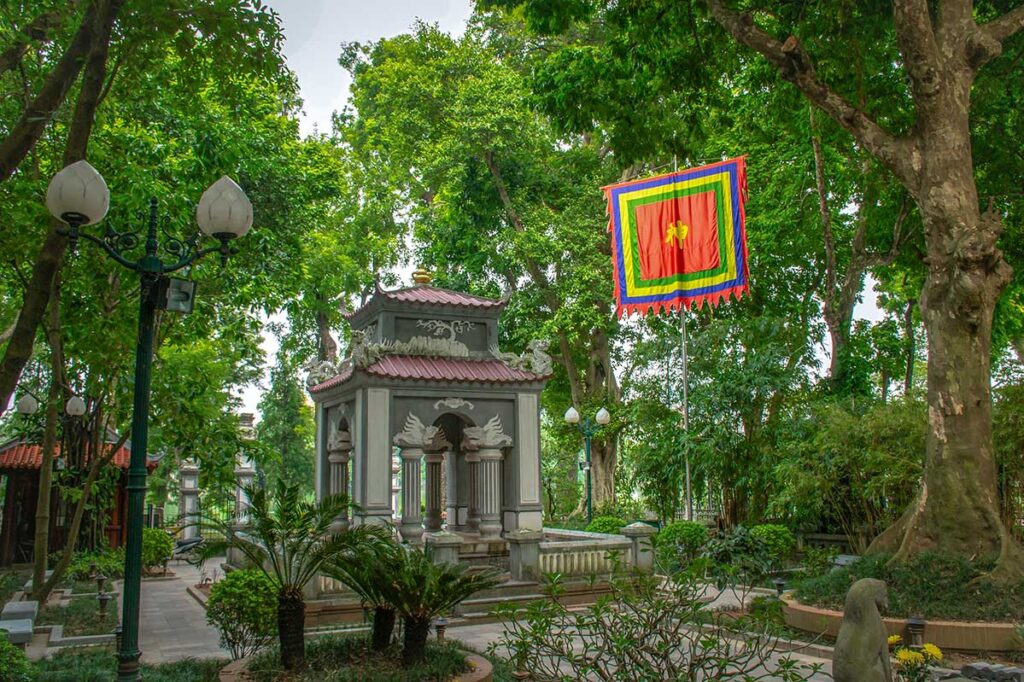
Perhaps the most famous site tied to Le Loi is Hoan Kiem Lake, right in the heart of Hanoi. This is where, according to legend, he returned the magical sword Thuận Thiên to the golden turtle spirit.
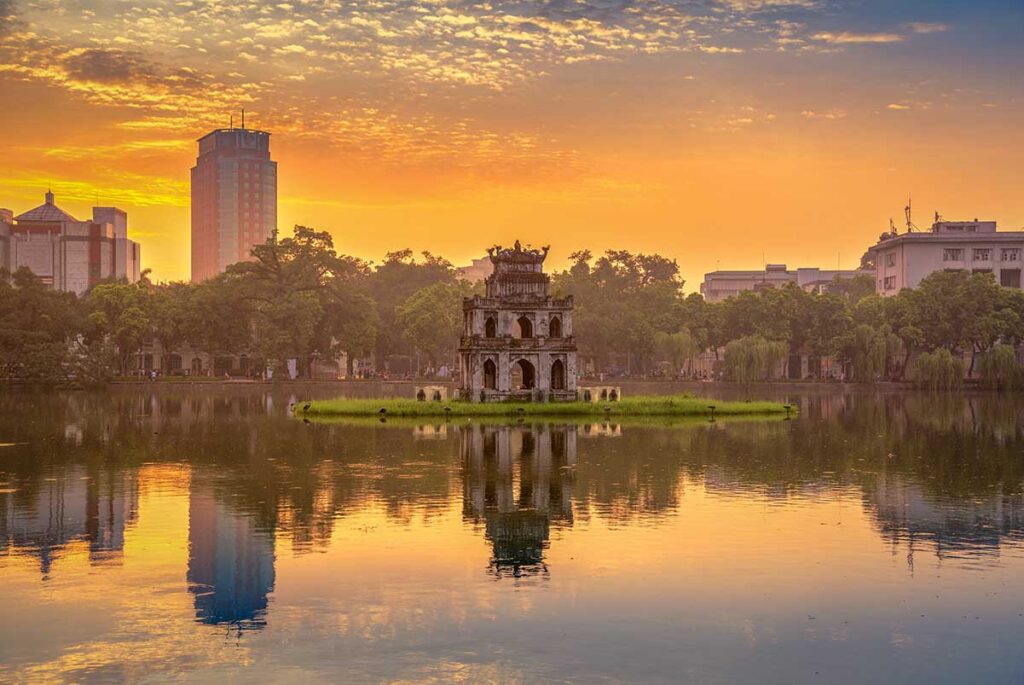
Today, the lake is a favorite walking spot for both locals and tourists, with the small Turtle Tower in the middle symbolizing the story. On the northern shore, Ngoc Son Temple also makes reference to the legend, and visiting it gives travelers a chance to connect the myth with one of Hanoi’s most iconic sights.
Temples & Memorial Sites
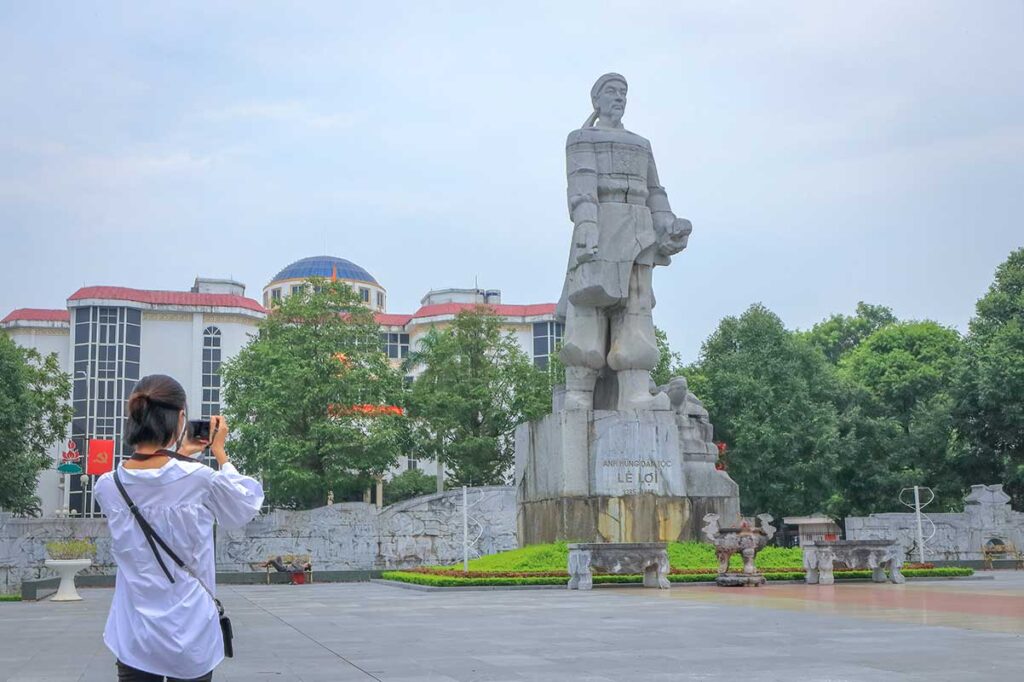
The most important place for learning about Le Loi’s real life is the Lam Kinh Historical Site in Thanh Hoa Province, his birthplace and political base. This complex includes his tomb, a temple dedicated to him, and ruins of the old Lam Kinh citadel. It’s less visited than Hanoi or Hue, but those who make the journey can explore a site that blends history, legend, and rural Vietnamese landscapes. Smaller shrines dedicated to Le Loi exist in other provinces as well, often maintained by local communities as part of cultural memory.
Streets, Schools & Public Symbols
Le Loi’s name is impossible to miss in Vietnam. Nearly every city has a Lê Lợi Street, from Hanoi and Hue to Ho Chi Minh City. In the capital, he is remembered with Lê Thái Tổ Street, circling part of Hoan Kiem Lake. Schools and universities also carry his name, reflecting how his image is embedded in national education. For travelers, seeing his name on street signs or school gates is a reminder of how deeply he is woven into Vietnamese identity.
Museums & Exhibits
For a more formal look at his story, the Vietnam National Museum of History in Hanoi includes exhibits on the Lam Son uprising and the early Later Le dynasty. Smaller regional museums, especially in Thanh Hoa, also display artifacts and narratives connected to Le Loi’s campaigns. These are useful stops for travelers who want to put the myths in historical context and understand how the struggle against the Ming shaped the nation.
Festivals & Cultural remembrance
Each year, especially around Lam Kinh, local communities hold ceremonies to honor Le Loi. These involve offerings, processions, and traditional performances. They aren’t large-scale tourist events like Hue Festival, but they reflect authentic local remembrance of a national hero. Travelers who happen to be in Thanh Hoa during these times can witness how Le Loi is still honored, not just as a figure of the past, but as a symbol of resilience and independence that continues to inspire.
Other famous emperors of Vietnam
While Le Loi is celebrated as one of the greatest heroes in Vietnamese history, he stands among a long line of rulers who each shaped the country in their own way. A few other emperors travelers often hear about include:
- Gia Long (1762–1820) – Founder of the Nguyễn dynasty, he reunified Vietnam after centuries of division and established the imperial capital in Hue.
- Minh Mạng (1791–1841) – Known for his strict Confucian policies and centralization of power, he expanded the empire and reinforced traditional values.
- Tự Đức (1829–1883) – A conservative and scholarly emperor whose reign struggled with foreign pressure, especially from the French, leading to Vietnam’s gradual loss of independence.
- Khải Định (1885–1925) – Remembered for his lavish and European-influenced tomb near Hue, often criticized in his time for cooperating with the French.
- Bảo Đại (1913–1997) – The last emperor of Vietnam, who abdicated in 1945 as revolutionary forces took control, ending centuries of imperial rule.
